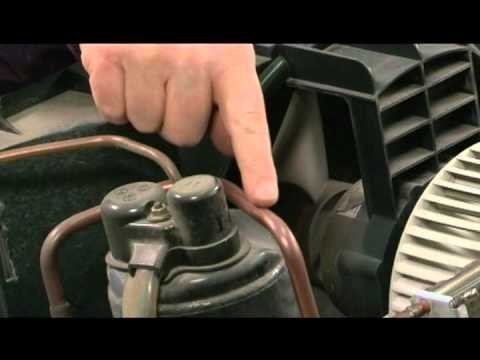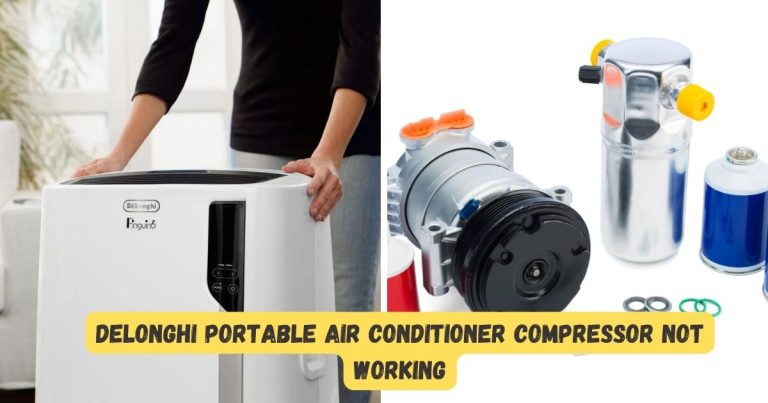Where Does The Moisture Go In A Portable Air Conditioner? Exploring The Disposal Methods
In a portable air conditioner, the moisture from the air is typically collected in a reservoir or tray within the unit. Some portable air conditioners have a built-in self-evaporation feature that eliminates the need to manually drain the collected moisture. Others may require occasional draining of the reservoir to prevent overflow.
Did you know that portable air conditioners not only cool the air but also remove moisture from the room? If you own a portable air conditioner or are considering purchasing one, understanding where the moisture goes is crucial for optimizing its performance and maintaining a healthy indoor environment. Excessive moisture buildup can lead to condensation, mold growth, and even a decline in indoor air quality.
But fear not, we’re here to shed light on this often-overlooked aspect of portable air conditioners. In this article, we will delve into the fascinating world of moisture management in portable air conditioners.
We’ll explore the inner workings of these devices, uncovering the mechanisms that enable them to effectively remove moisture from the air. Whether you’re a novice seeking a basic understanding or an intermediate user looking to fine-tune your knowledge, we’ve got you covered. Throughout this article, we’ll address common concerns, such as the potential impact of moisture on indoor air quality and how to prevent excessive condensation.
By the end, you’ll have a comprehensive understanding of where the moisture goes in a portable air conditioner and the steps you can take to optimize its performance. So, if you’re ready to demystify the world of portable air conditioners and gain valuable insights into moisture management, let’s dive in! Your portable air conditioner will thank you, and your comfort levels will soar. Don’t miss out on the chance to make the most of your cooling experience.
Understanding Moisture in Portable Air Conditioners
When it comes to portable air conditioners, understanding how they manage moisture is crucial for optimizing their performance and ensuring a healthy indoor environment. Let’s take a closer look at the inner workings of these devices and discover where the moisture goes.

How Do Portable Air Conditioners Work?
Before we dive into moisture management, let’s briefly explore how portable air conditioners function. These devices are designed to cool the air in a room by removing heat and humidity. They consist of four main components: a compressor, a condenser, an evaporator, and a fan.
The compressor compresses the refrigerant, increasing its temperature and pressure. This high-pressure gas then flows to the condenser, where it releases heat and condenses into a liquid. The liquid refrigerant then passes through the evaporator, where it evaporates, absorbing heat from the surrounding air. Finally, the fan blows the cooled air back into the room, while the hot air is expelled through an exhaust hose.
Moisture Removal in Portable Air Conditioners
One of the primary functions of a portable air conditioner is to remove excess moisture from the air. As the warm air passes through the evaporator, the evaporator coil’s cold surface causes the moisture in the air to condense into water droplets. This condensation process is similar to what happens when you leave a cold glass of water outside on a hot day.
The condensed moisture is then collected in a built-in reservoir or directed outside through a drainage hose. Portable air conditioners typically have a water tank that needs to be manually emptied when full, or they may have a continuous drainage system that allows for automatic water disposal.
It’s important to note that not all portable air conditioners have the same moisture removal capabilities. The amount of moisture a unit can remove depends on factors such as the unit’s size, cooling capacity, and the current humidity levels in the room. Higher-capacity units are generally more effective at dehumidifying larger spaces.
Preventing Excessive Condensation
While portable air conditioners excel at removing moisture, it’s essential to prevent excessive condensation to maintain a healthy indoor environment. Here are a few tips to help you avoid excessive condensation:
1. Proper Ventilation
Ensure that your portable air conditioner is properly ventilated. This allows for the efficient expulsion of hot air and prevents the buildup of condensation. Make sure the exhaust hose is securely connected and free from obstructions. Additionally, avoid placing objects near the exhaust vent that could impede airflow.
2. Control Humidity Levels
Monitor and control the humidity levels in your room. If the air is already saturated with moisture, it becomes more challenging for the portable air conditioner to remove excess humidity effectively. Use a hygrometer to measure the humidity levels and consider using a dehumidifier in conjunction with your portable air conditioner if necessary.
3. Regular Maintenance
Perform regular maintenance on your portable air conditioner to prevent any issues that could lead to excessive condensation. Clean or replace the air filters as recommended by the manufacturer to ensure proper airflow. Keep the unit clean and free from dust and debris that can obstruct airflow and impede moisture removal.
4. Consider Room Size
Choose a portable air conditioner appropriate for the size of your room. An undersized unit may struggle to effectively remove moisture, leading to increased condensation. Refer to the manufacturer’s guidelines or consult with an HVAC professional to determine the appropriate cooling capacity for your space.
Understanding where the moisture goes in a portable air conditioner is essential for maximizing its performance and maintaining a healthy indoor environment. By comprehending the inner workings of these devices and implementing proper moisture management techniques, you can ensure effective cooling and prevent excessive condensation.
Remember to provide adequate ventilation, control humidity levels, perform regular maintenance, and choose the right size unit for your room. By following these guidelines, you can optimize your portable air conditioner’s dehumidification capabilities and enjoy a comfortable, moisture-free environment.
(REVIEW) black & decker bpact14wt portable air conditioner 14000 Btu2
Where does the moisture go in a portable air conditioner?
Do portable air conditioners need to be drained?
Can I use a container to collect the moisture from a portable air conditioner?
Can I use a portable air conditioner without an exhaust hose?
How often should I clean the moisture filter in a portable air conditioner?
Final Summary: Optimizing Moisture Management for Your Portable Air Conditioner
In conclusion, understanding how moisture is handled in a portable air conditioner is crucial for its optimal performance and maintaining a healthy indoor environment. Portable air conditioners work by removing heat and humidity from the air through a series of components, including a compressor, condenser, evaporator, and fan.
When warm air passes through the evaporator, the cold surface of the evaporator coil causes the moisture in the air to condense into water droplets. This condensed moisture is collected in a built-in reservoir or directed outside through a drainage hose.
To prevent excessive condensation, it is important to ensure proper ventilation of the portable air conditioner to efficiently expel hot air and avoid the buildup of condensation. Controlling humidity levels in the room is also essential, as saturated air makes it more challenging for the portable air conditioner to effectively remove excess moisture. Regular maintenance, such as cleaning or replacing air filters, and keeping the unit free from dust and debris, is necessary to prevent issues that could lead to excessive condensation.
Additionally, choosing a portable air conditioner with the appropriate cooling capacity for the room size is important to ensure effective moisture removal. By following these guidelines, you can optimize the dehumidification capabilities of your portable air conditioner and enjoy a comfortable and moisture-free indoor environment. Understanding where the moisture goes and implementing proper moisture management techniques will help you make the most of your portable air conditioner and maintain a healthy indoor climate.






